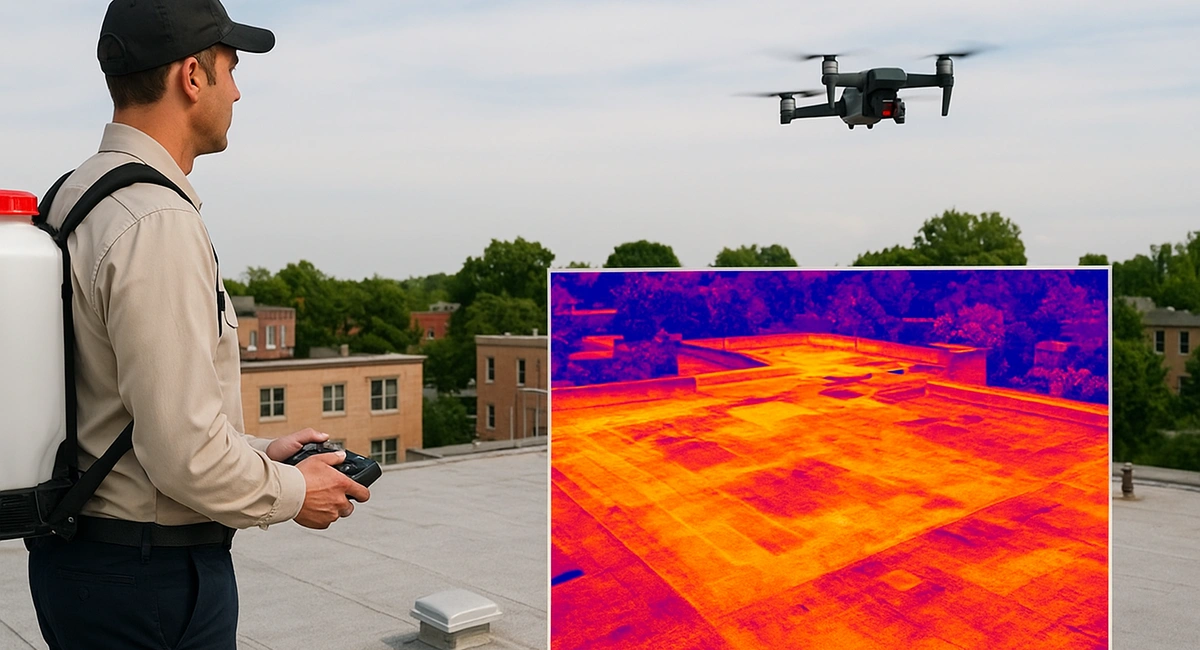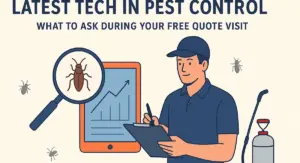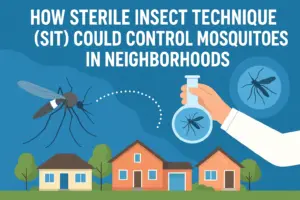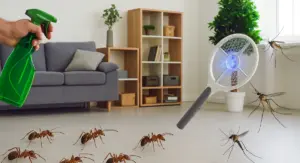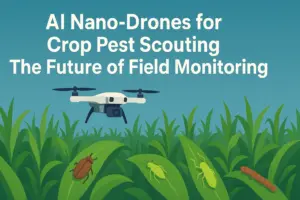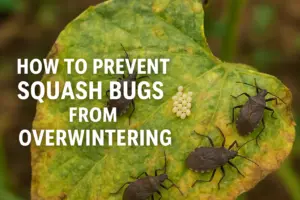In the world of pest control, new tools are changing the game. One of the most impactful changes is how professionals handle rooftop or high-up pest problems. Instead of sending workers up ladders or risking injury, more companies are turning to drone pest control. Combined with thermal imaging rodents detection, this technology makes it easier to inspect and treat pests in places that were once difficult to reach safely.
This method is especially useful for large buildings, warehouses, office spaces, and even residential homes with complex rooflines. If you’ve ever wondered how pest control is keeping up with modern demands, this story is a perfect example.
For those managing larger properties or hard-to-access structures, learning about how to prevent common rodent entry points is also a smart starting point. But when rodents are already in the attic or nesting near a rooftop HVAC system, that’s where drone inspection steps in.
Why Use Drones for Pest Control?
Traditionally, checking a roof for pests like squirrels, rats, or wasp nests involved a ladder, some guesswork, and a bit of risk. With drones, inspections become safer, faster, and more accurate.
Here’s what makes drones so useful in pest work:
- Quick aerial access: Reach rooftops or tall buildings in minutes
- High-resolution visuals: Capture images or videos in real time
- Minimal disruption: No need for scaffolding or rooftop entry
- Improved safety: No climbing required, reducing the risk of falls
These benefits allow pest control experts to assess damage or infestations with little downtime. This is especially helpful in commercial settings, like hospitality or retail, where interruptions can affect business.
How Thermal Imaging Helps Detect Rodents and Other Pests
One of the trickiest parts of high-up pest inspection is spotting signs that aren’t visible to the eye. Rodents and other pests often hide behind insulation or within roof cavities. Thermal imaging fills that gap.
Thermal cameras detect heat differences. A hidden rat nest, for example, gives off a different heat signature than the surrounding roof. This makes it easy to locate hidden activity, even if there’s no visible movement.
Thermal imaging works well for:
- Rodents nesting in attic spaces or within roof walls
- Wasp or bee hives in chimneys or overhangs
- Squirrels or raccoons seeking warmth near vents
- Structural weaknesses caused by pest-related damage
By spotting heat variations, pest control professionals can pinpoint the exact spot that needs treatment. This precision is especially helpful when identifying early signs of termite damage or nesting rodents before the infestation spreads further.
Drone Pest Control in Action: What It Looks Like
A typical drone pest control session follows a clear process. First, the technician will map the property using flight planning software. The drone then flies around the structure, capturing real-time footage and thermal data. Once potential pest zones are identified, targeted treatment can begin.
In many cases, drones are also equipped with treatment tools like sprayers that can release pest control solutions directly into nests or entry points.
Here’s how the process usually goes:
- Inspection: Aerial drone flyover with thermal imaging
- Analysis: Review of footage and heat maps for pest signs
- Treatment planning: Determine best access points or necessary treatment zones
- Action: Use drones or follow-up by professionals on-site if needed
This streamlined process saves time and lowers labor costs. Plus, it reduces property disturbance, an important factor for maintaining pest-free offices and commercial spaces.
When Is This Method Most Useful?
Drone and thermal imaging technology isn’t needed for every pest issue. But in certain situations, it makes all the difference.
Some ideal use cases include:
- Large warehouses where pests nest in rafters or upper vents
- Apartment complexes with flat or tiered roofing
- Restaurants and kitchens with rooftop exhausts that attract pests
- Historic buildings where rooftop access is limited or dangerous
In warmer months, high-up pest activity increases. Birds, wasps, and rodents seek shade and shelter on rooftops.
Benefits for Residential and Commercial Pest Control
Both homeowners and business owners benefit from this approach. For residential settings, drones can find hard-to-spot entry points or nests without disturbing the home’s structure. In commercial areas, quick detection avoids costly shutdowns and health code violations.
Let’s look at how each group benefits:
Homeowners:
- Spot damage early before it worsens
- Locate rodent nests near attic vents or chimneys
- Treat wasp hives or nests without climbing
Businesses:
- Maintain safety standards in kitchens or food storage
- Prevent infestations in large commercial rooftops
- Cut down inspection time and reduce liability
This method is often used alongside other inspection techniques, forming part of a well-rounded pest control calendar for properties in Georgia, Florida, and surrounding areas.
Future of Drone Pest Control
The use of drones and thermal cameras is only growing. As the technology becomes more affordable, more pest control companies are adopting it. The accuracy and safety make it an easy decision.
Some emerging trends include:
- AI-powered drones that can automatically detect pest patterns
- Real-time 3D mapping of roofs and attics
- Drones that can carry out precise chemical or heat-based treatments
Whether you manage a small office or a sprawling warehouse, combining thermal imaging for rodents with drone inspection is proving to be one of the most effective modern tools.
FAQs
Can drones treat pests directly, or are they just for inspection?
Many drones are equipped with sprayers and can apply pest treatments in specific areas. However, they’re most often used for inspection to plan a more targeted response.
Is thermal imaging accurate for rodent detection?
Yes. Rodents give off heat, and thermal cameras can pick up their nests or movement, especially in colder months or during early mornings.
How much does drone pest control cost?
Costs vary based on building size and pest type. While it may cost more upfront than traditional inspection, it often reduces treatment and labor costs later.
Are drone inspections safe for residential areas?
Absolutely. Licensed professionals follow FAA guidelines and privacy laws. The drone only captures data related to the pest issue and stays within the property line.
Final Thoughts
Technology is transforming pest control, making it smarter and safer. Drones and thermal imaging aren’t just gadgets. They are powerful tools for handling high-up pest challenges quickly and efficiently. Whether you’re dealing with rodents in attic spaces or wasps nesting along rooflines, this approach offers a practical solution.
Pairing it with traditional methods like identifying rodent entry points in your home ensures complete coverage. Businesses can also benefit by integrating drone inspections into broader warehouse pest control strategies to prevent repeat infestations.
As pests become more adaptive, so must our approach to stopping them. Drone and thermal solutions are paving the way forward.


